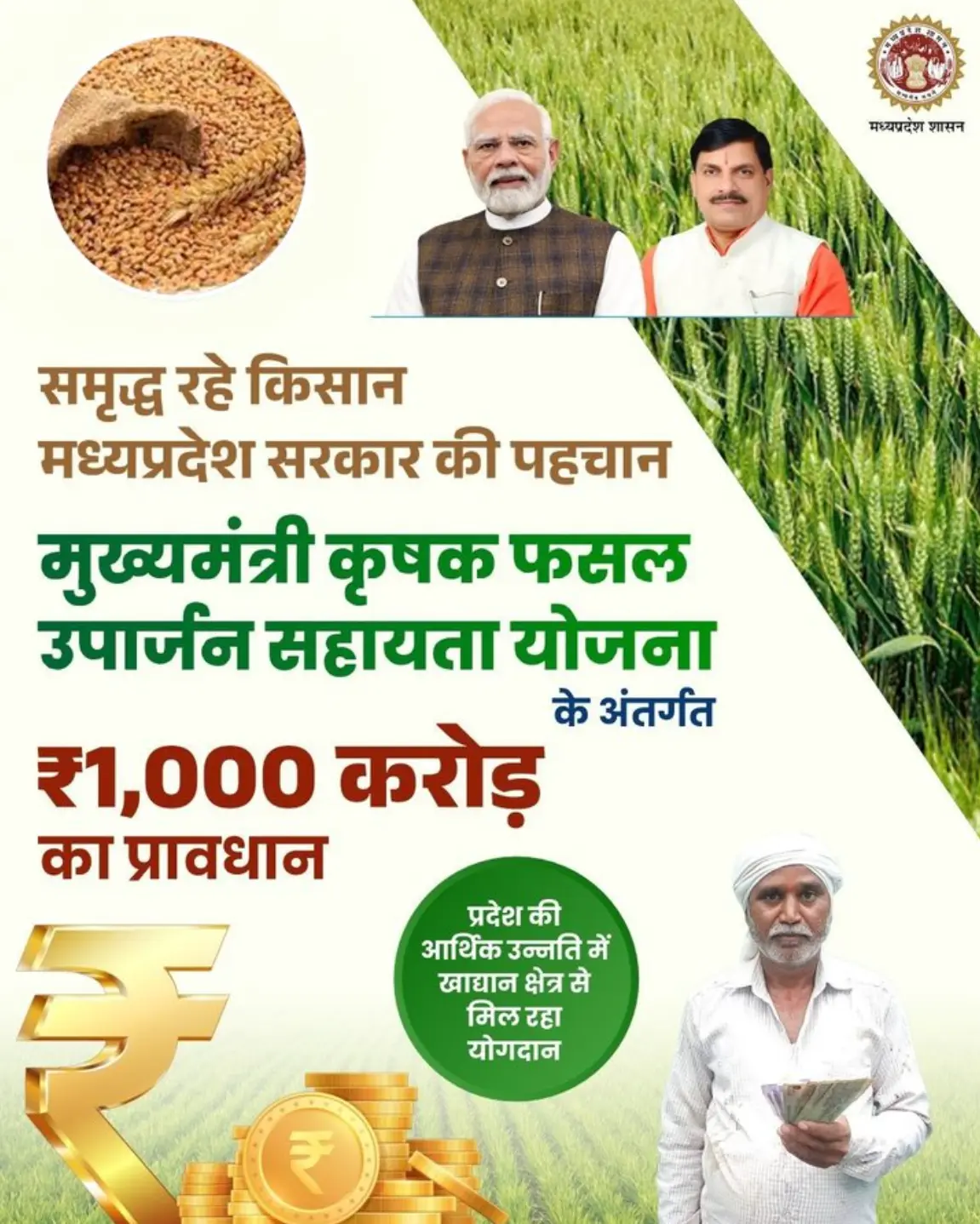MP Mukhyamantri Krishak Fasal Uparjan Sahayata Yojana 2025: Madhya Pradesh government has been implementing the MP Mukhyamantri Krishak Fasal Uparjan Sahayata Yojana to ensure farmers receive fair prices for their crops. Launched to support farmers by addressing operational losses in grain procurement, this scheme, known as मुख्यमंत्री कृषक फसल उपार्जन सहायता योजना, remains a cornerstone of the state’s agricultural welfare initiatives.
In this article, we provide the latest details of the CM Farmer Crop Acquisition Assistance Scheme as of 2025.
What is MP Mukhyamantri Krishak Fasal Uparjan Sahayata Yojana?
Mukhyamantri Krishak Fasal Uparjan Sahayata Yojana was introduced to ensure farmers receive appropriate prices for their crops by supporting state procurement agencies like the Food and Civil Supplies Corporation and Markfed. The scheme, approved by the Madhya Pradesh Cabinet on January 4, 2022, compensates for operational losses incurred during grain procurement, ensuring prompt payments to farmers. In the 2021-22 MP state budget, the government allocated Rs. 2,000 crore for this initiative. While for 2025-26, the state government has allocated Rs. 1000 Crore under the scheme.

Cabinet Approval and Purpose of MP CM Krishak Uparjan Sahayata Yojana
MP Mukhyamantri Krishak Fasal Uparjan Sahayata Yojana was approved to address the financial challenges faced by state agencies like the Food and Civil Supplies Corporation and Markfed, which procure grains on behalf of the government. As of January 2022, the Madhya Pradesh government reported losses of approximately Rs. 6,000 crore in grain procurement operations, with an additional Rs. 12,000 crore in unpaid dues from the central government. The scheme provides budgetary support to cover these losses, ensuring that farmers are paid promptly within 10 days of procurement. According to former Agriculture Minister Kamal Patel, this initiative breaks the cycle of high-interest loans taken by agencies to facilitate timely payments to farmers.
The scheme supports the procurement of crops beyond the central government’s specified limits. For instance, in 2021-22, the state procured over 1 lakh metric tons of crops like moong, exceeding the Centre’s limit of 95,000 metric tons, with additional costs financed through loans. This ensures farmers receive fair market prices even when central reimbursements are delayed. However, operational costs remain a challenge when procured stocks are not lifted or are rejected, placing the financial burden on state agencies.

